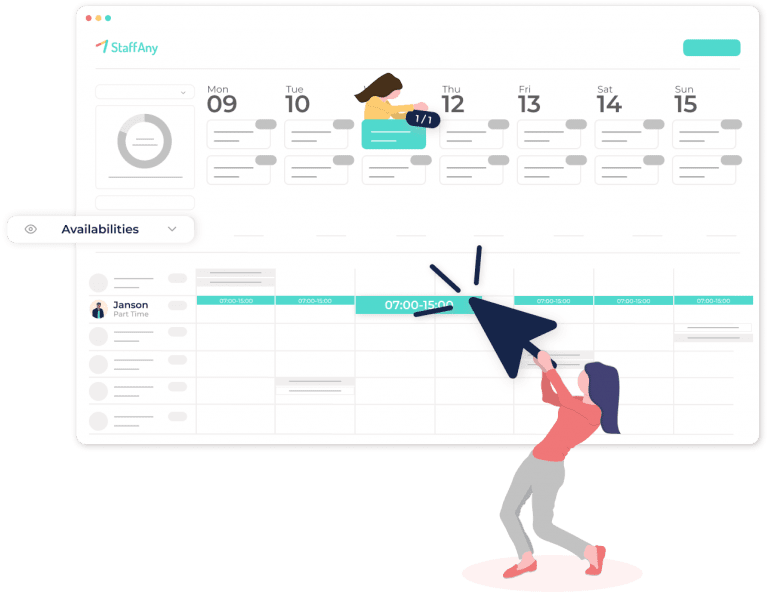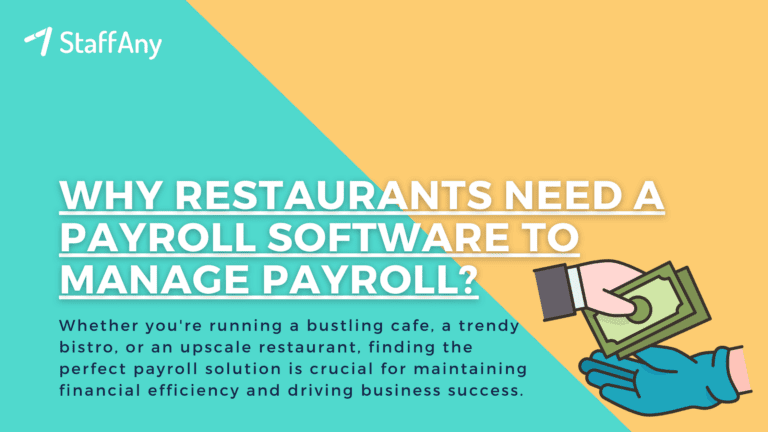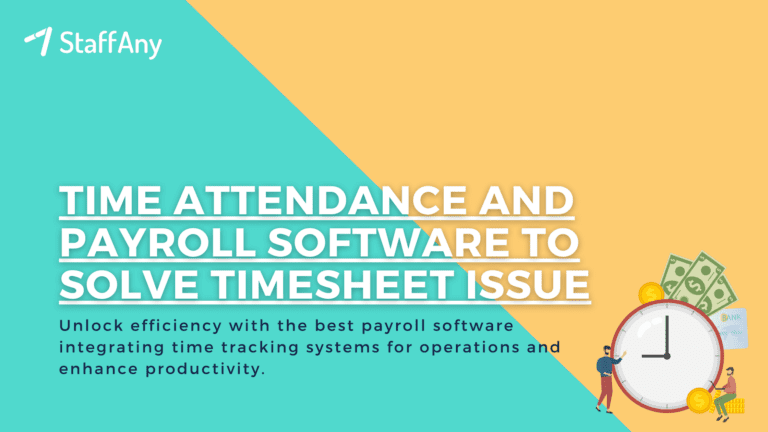In the fast-paced world of the food and beverage industry, effective management is crucial for success. Food service management serves as the backbone of this industry, encompassing a wide range of responsibilities and strategies to ensure smooth operations and exceptional customer service. From planning and organising to controlling and optimising, food service management is a dynamic field that demands attention to detail, creativity, and a deep understanding of customer preferences.
In this article, we will explore the definition and goal of food service management, shedding light on its key objectives and highlighting the common tools utilised in this ever-evolving discipline.
What is Food Service Management?
Food service management refers to the comprehensive approach of planning, organising, and controlling all aspects related to the provision of food services. Whether it’s a bustling restaurant, a prestigious hotel, a bustling catering company, or even a healthcare facility or educational institution, food service management ensures that the right systems and strategies are in place to meet customer needs. From procuring ingredients and managing inventory to coordinating staff and maintaining quality standards, food service management is the driving force behind successful food establishments.
Read more: Time Management Importance for F&B Businesses
What is the Goal of Food Service Management?
When it comes to food service management, the primary goal is to provide an outstanding dining experience for customers while maintaining profitability and operational efficiency. Let’s explore some of the key objectives that shape the path toward achieving this goal:
1. Enhancing Customer Experience
One of the primary goals of food service management is to ensure an exceptional dining experience for customers. This involves creating a welcoming ambience, training staff members to deliver excellent customer service, and providing delicious and hygienic meals that meet customers’ expectations.
2. Efficient Operations
Food service management aims to optimise operational efficiency by streamlining processes, reducing wastage, and enhancing productivity. This includes effective inventory management, proper scheduling of staff, implementing standardised recipes, and utilising technology to streamline order processing and billing systems.
3. Compliance with Regulations
Another essential goal of food service management is to adhere to food safety regulations and maintain high hygiene standards. This involves training staff on proper food handling and storage practices, conducting regular inspections, and ensuring compliance with local health department guidelines.
4. Cost Control
Managing costs is crucial for the success of any food service establishment. Food service management focuses on effective budgeting, monitoring expenses, and finding ways to reduce costs without compromising the quality of food and services. This can include negotiating better deals with suppliers, implementing energy-saving practices, and optimising menu pricing.
Read more: Getting to Know Rotational Shift Meaning and Its Benefits for F&B Businesses
5. Menu Planning and Development
Food service management involves strategic menu planning to meet customer preferences and dietary requirements. It includes analysing customer feedback, monitoring food trends, and collaborating with chefs to create innovative and appealing menus. Additionally, menu development takes into consideration cost considerations, ingredient availability, and seasonality.
6. Staff Training and Development
Ensuring a well-trained and motivated staff is crucial for the success of any food service establishment. Food service management involves providing comprehensive training programs to enhance the skills of the staff members.
This includes training on customer service, food safety and hygiene, culinary techniques, and teamwork. Additionally, ongoing professional development opportunities help retain talented employees and ensure continuous improvement in service quality.
7. Quality Assurance
Maintaining consistent quality in food and services is a fundamental goal of food service management. It involves implementing quality control measures, conducting regular audits, and seeking customer feedback to identify areas for improvement. By monitoring and maintaining high-quality standards, food service establishments can build a strong reputation and gain customer loyalty.
8. Sustainable Practices
With growing concerns about the environment, food service management aims to adopt sustainable practices. This includes sourcing local and organic ingredients, minimising food waste through proper portioning and recycling programs, and reducing energy and water consumption. By embracing sustainability, food service establishments contribute to a healthier planet and resonate with eco-conscious customers.
9. Marketing and Promotion
Effective marketing and promotion are essential for attracting and retaining customers in the highly competitive food and beverage industry. Food service management involves developing marketing strategies, leveraging social media platforms, and organising events or special promotions to create buzz and increase customer engagement.
10. Continuous Improvement
Food service management is an ongoing process of improvement and adaptation to meet changing customer preferences and industry trends. By staying informed about emerging technologies, industry best practices, and customer demands, food service establishments can stay ahead of the competition and deliver outstanding experiences.
Read more: Understanding Employee Management System and Its Benefits
The Importance of 5S Principle in the Food Industry
In the context of the food industry, 5S refers to a set of principles aimed at improving workplace organization and efficiency. The 5S methodology originated in Japan and consists of five Japanese words, each starting with an “S,” that represent specific steps in the process.
The 5S framework is often used in various industries, including manufacturing and food production, to create a clean, organized, and efficient work environment. Here are the 5S components:
1. Seiri (Sort)
This involves sorting through items in the workplace and removing unnecessary items. In the food industry, this could mean removing outdated or expired ingredients, tools, or equipment to ensure a clutter-free and efficient workspace.
2. Seiton (Set in order)
After sorting, the next step is to organize and arrange necessary items in a systematic way. In the food industry, this might involve organizing ingredients, tools, and equipment in a way that minimizes the risk of contamination and makes it easy for workers to locate what they need.
3. Seiso (Shine)
This step emphasizes cleanliness. It involves thoroughly cleaning and maintaining the workplace, including equipment and tools. In the food industry, maintaining a clean environment is crucial to prevent contamination and ensure food safety.
4. Seiketsu (Standardize)
Standardizing involves establishing and maintaining standards for the first three S’s. This helps ensure that the organization and cleanliness achieved in the first three steps are sustained over time. Standardization is vital in the food industry to maintain hygiene and safety standards consistently.
5. Shitsuke (Sustain)
The final step is to sustain the improvements achieved through the first four steps. It involves creating a culture of continuous improvement and ensuring that the 5S principles become ingrained in the organizational culture.
Implementing 5S in the food industry can lead to a more organized and efficient workplace, contribute to food safety, and enhance overall productivity.
Read more: 11 Effective Restaurant Risk Management Strategies
What are the Main Responsibilities of Food Service Managers?
Food service managers play a crucial role in overseeing the operations of establishments that serve food, such as restaurants, cafeterias, and catering companies. Their responsibilities encompass various aspects of the business to ensure smooth and efficient functioning. Here are some core responsibilities of food service managers:
1. Menu Planning and Development
Food service managers play a key role in planning and developing menus. They create menus that align with customer preferences and business goals, introduce specials and promotions, and address dietary considerations to enhance the dining experience.
2. Quality Control
Ensuring high standards of quality is paramount. Managers oversee food quality, service standards, and enforce strict cleanliness and sanitation practices to maintain a positive and safe dining environment.
3. Customer Relations
Building and maintaining positive customer relations is crucial for the success of a food service establishment. Managers address customer concerns, gather feedback for improvement, and develop strategies to attract and retain a satisfied customer base.
4. Compliance and Regulation
Food service managers ensure compliance with health and safety regulations, obtain necessary licenses and permits, and enforce rigorous food safety standards to uphold legal and ethical standards.
5. Technology Utilization
Food service managers leverage technology for efficient operations. They implement and manage point-of-sale systems for transactions, utilize reservation systems, and stay informed about technological advancements to enhance overall business efficiency.
Read more: 10 Types of Food and Beverage Operations
5 Tools of Food Service Management
To achieve the goals of food service management, various tools and technologies are employed to streamline operations and enhance efficiency.
Let’s explore some of the common tools that aid in the effective management of food service establishments:
1. Point of Sale (POS) Systems
POS systems are crucial tools for food service management, enabling efficient order processing, billing, and inventory management. These systems help streamline operations, provide accurate sales reports, and track inventory levels, allowing managers to make data-driven decisions.
2. Menu Engineering Software
Menu engineering software assists in optimising menu design and pricing strategies. These tools analyse sales data, item popularity, and profitability to identify high-performing items and opportunities for improvement. By strategically placing items and adjusting prices, food service establishments can maximise profitability and customer satisfaction.
3. Food Safety and Compliance Tools
To maintain high food safety standards, food service management relies on various tools such as temperature monitoring systems, digital food safety checklists, and allergen management software. These tools help ensure proper food storage, cooking temperatures, and allergen labelling, reducing the risk of foodborne illnesses and regulatory non-compliance.
4. Customer Feedback and Reputation Management Platforms
Customer feedback and reputation management tools enable food service establishments to gather customer reviews, monitor online ratings, and respond to feedback promptly. These platforms help in understanding customer preferences, addressing concerns, and maintaining a positive online reputation, ultimately attracting more customers.
5. Employee Scheduling Software
Managing staff schedules efficiently is essential in food service management. Employee scheduling software simplifies the process by automating shift assignments, managing time-off requests, and ensuring adequate staffing levels. These tools help optimise labour costs, prevent understaffing or overstaffing, and enhance productivity.
Read more: Employee Rotation Schedule: Definition, Type, and Benefits
Improve your Employee Management with Employee Scheduling System

As a food service manager, you may understand in the dynamic world of food service business, the right tools can make all the difference in achieving operational excellence and providing an exceptional customer experience.
Thus, if you’re looking to optimise your staff scheduling processes and streamline your operations, consider exploring StaffAny’s Employee Scheduling Software. Here are some benefits you can get by implementing StaffAny’s employee schedulling system:
1. Real Time Availabilities
With a connected workforce, know the team availability, who is on leave, and which of your part-timers are available before planning for your A-team in a familiar interface.
2. Schedule Your Staff In One Click with Auto-Scheduling
We understand that speed and accuracy are everything. Just by clicking on the shifts, you instantly assign your staff to a shift. We provide you with schedule templates that can be customised based on your needs.
3. Get Better Visibility of Labour Costs While Scheduling
Food service managers can take control of actual labour costs to optimise and achieve target manpower budget and lower operating costs to increase your take-home profits.
With its user-friendly interface and powerful features, StaffAny empowers food services industry to efficiently manage staff schedules, improve productivity, and enhance customer satisfaction. Take a step towards seamless staff management today with StaffAny!











